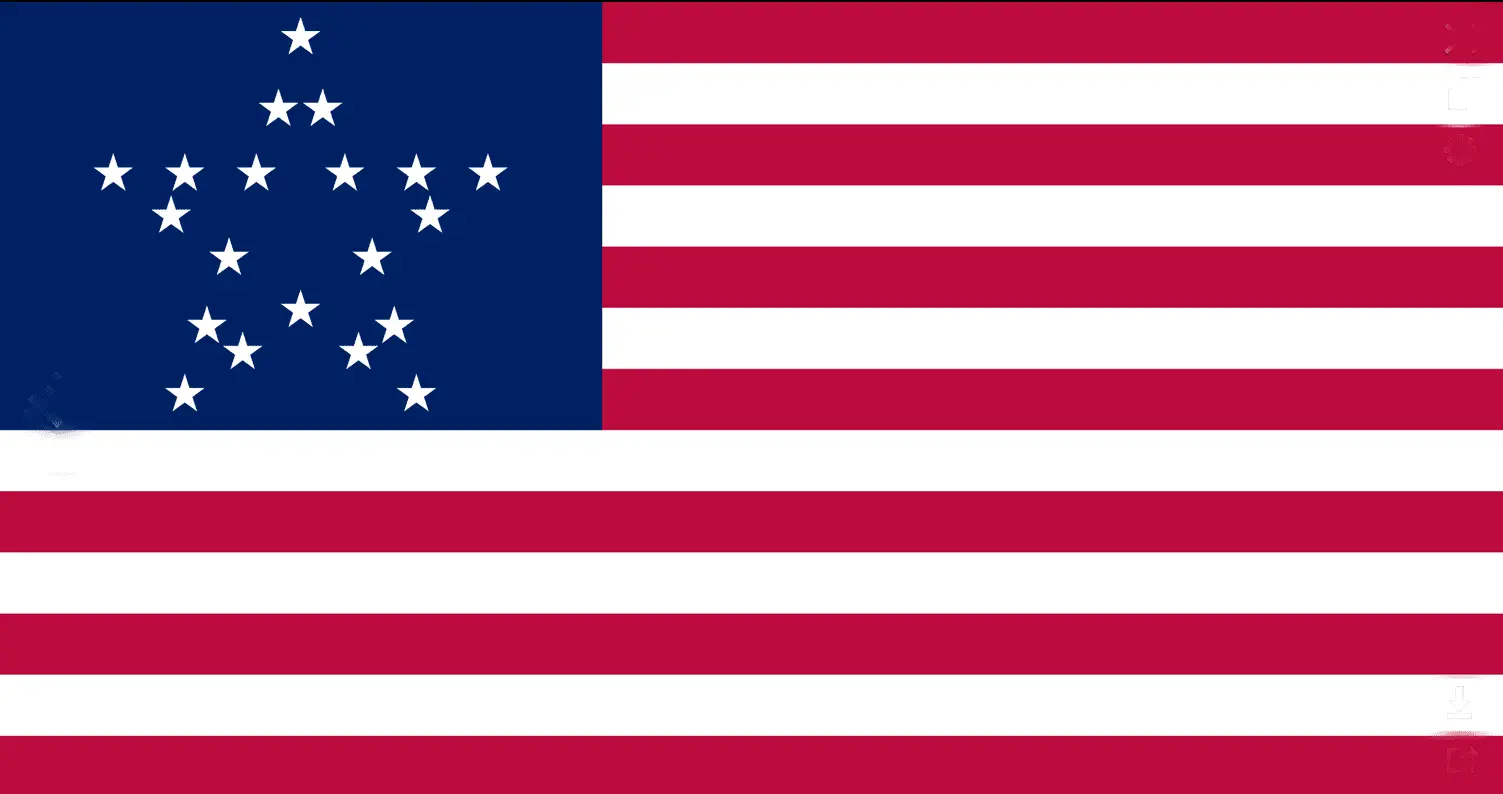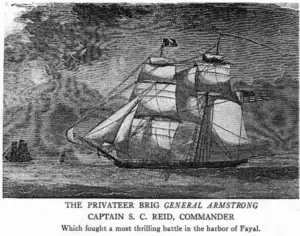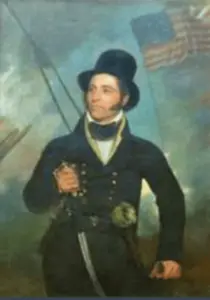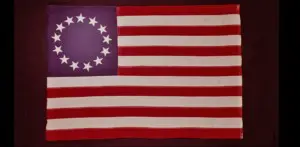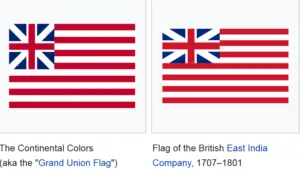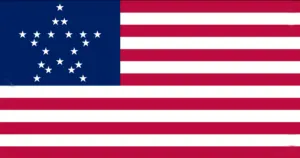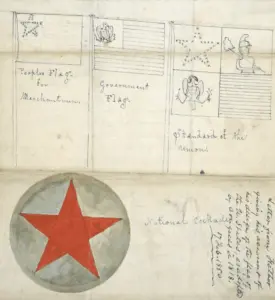The flag of the United States of America is a symbol of pride and freedom for all Americans. Our flag stands for our nation and its shared history, pride, principles, and commitment of its people. The U.S. flag goes by different names; the American flag, the stars and stripes, the red, white, and blue, old glory, and the star-spangled banner. Regardless of what it is called the American flag is one of the most recognizable symbols of any country in the world. Ever wonder who designed the U.S. flag? It turns out that a number of people can take some credit for the flag’s design including a sea captain from Norwich, Connecticut.
U.S. Navy Master commandant Samuel Chester Reid was born in Norwich, Connecticut in 1783. His father, John Reid, was a lieutenant in the British Navy and he was captured during the American Revolution in New London. After his capture, Reid’s father decided to support the rebellion and resigned from the British Navy to join the American side.
Samuel Reid led an adventurous life and went to sea at the young age of 11. He entered the Navy in 1794 and served on the American frigate Constellation with Commodore Thomas Truxtun. He was once captured by a French privateer and confined for six months at Basseterre, Guadeloupe.
In 1803 he became master of the brig Merchant and in the War of 1812 commanded the privateer General Armstrong. Reid captured many British merchant vessels during the war including the British merchantman Fanny.
At the Battle of Fayal in the Azores Reid inflicted severe casualties on boats from a British squadron of three warships en route to New Orleans, Louisiana after which Reid had to scuttle his ship. He and his crew made it to shore safely but Reid and one other sailor were wounded. The British sustained over 100 killed or wounded during the battle. General Andrew Jackson credited Reid’s action with delaying the British squadron and so aiding in Jackson’s victory at the Battle of New Orleans. When Reid and his crew returned to America they were greeted as heroes.
“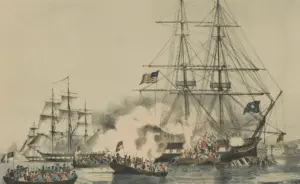
After the war, Reid was tasked with designing a new version of the U.S. flag and decided that the best way to honor all 20 states was to restore the number of stripes to the original 13 and have 20 stars on the canton. A new star would be added each time a new state joined the union. This is the flag we use today.
According to popular legend, Philadelphia seamstress, Betsy Ross designed the first flag at the request of General George Washington. Historians have been unable to conclusively prove or disprove this legend. Although she purportedly sewed the first flag in 1776, Ross wasn’t credited with this work during her lifetime. According to her grandson, William Canby, Ross often recounted a visit she had in 1776 from three men; General George Washington, financier Robert Morris, and Colonel George Ross.
During this meeting, she was presented with a sketch of a flag that featured 13 red and white stripes and 13 six-pointed stars. Ross was asked if she could create a flag to match the proposed design. She suggested a few changes including arranging the stars in a circle and making the stars five-pointed instead of six. However, the legend that Betsy Ross sewed the first flag has never been verified and the family of Rebecca Young claimed that she sewed the first flag.
Francis Hopkinson, a congressman from New Jersey, a naval flag designer and a signer of the Declaration of Independence claimed that he designed a flag for the U.S. Navy that became the first flag. Hopkinson was the only person to have made such a claim during his lifetime when he sent a letter and several bills to Congress for his work. These claims are documented in the Journals of the Continental Congress and a letter he wrote to Congress in 1780. In this letter, he asked for a “quarter cask of the public wine” as payment for designing the U.S. flag.
It turns out that the design of the first flag probably was based on an earlier design called the Continental Colors, also known as the Grand Union Flag. It was very similar to the company flag of the East India Company. Benjamin Franklin endorsed the adoption of the company’s flag by the United States as our national flag.
He wrote George Washington, “While the field of your flag must be new in the details of its design, it need not be entirely new in its elements. There is already in use a flag; I refer to the flag of the East India Company.” The following year, on June 14, 1777, Congress officially adopted The Stars and Stripes as the national flag and this date is celebrated every June 14 as Flag Day.
The new U.S. flag was first flown during a battle in August 1777 during the Revolutionary War at the Siege of Fort Stanwix. The siege took place in the Mohawk River Valley of upstate New York where a force of 750 men made a stand against a force of more than 2000 Loyalists.
On day two of the siege, soldiers learned of the flag’s adoption by Congress from Massachusetts reinforcements. They didn’t have a flag yet, so they decided to make one. The soldiers cut up their shirts to make white stripes and took scarlet-colored material from the red flannel petticoats of officers’ wives for the other stripes. They obtained blue from Captain Abraham Swartwout’s blue cloth coat. To this day a voucher exists that shows proof of Congress paying Swartwout for his coat in order to create the flag.
In 1795, two stars and two stripes were added to the flag after Kentucky and Vermont joined the Union. This brought the total number of stars and stripes to 15. This is the version of the flag that flew over Fort McHenry during the War of 1812 inspiring Francis Scott Key to write the National Anthem. In his poem, Key called the flag the star-spangled banner.
By 1818, five more states had joined the union and the flag needed to be updated to reflect the new states. Congress wanted to figure out how to represent them in a new version of the flag. Congressman Peter H. Wendover, of New York, was appointed head of a congressional committee tasked with investigating possible alterations. In January 1817, Wendover asked Samuel Chester Reid to help design the new U.S. flag.
Reid sketched three flag designs, one for general use which featured the 20 stars arranged in the shape of a larger star, one for use on government vessels and buildings which featured an eagle on the canton instead of stars, and one for use on ceremonial occasions which featured stars, stripes, and the Great Seal. Wendover and his congressional committee adopted Reid’s general use flag but never seriously considered his other two designs.
Wendover drafted a bill which stipulated that the 13 stripes, 20-star design become the new official flag of the United States and first established the rule of keeping 13 stripes and adding one star for each U.S. state. The bill passed and was signed into law as the Flag Act of 1818 by President James Monroe. On acceptance of the design by Congress, Reid’s wife made the first new flag with silk provided by the government and it was flown from the United States Capitol dome on April 13, 1818.
Reid was appointed Master commandant in the Navy in 1844 having served in the Navy for over 50 years. He died in New York in January 1861 and is buried at Green-Wood Cemetery in Brooklyn, New York. Four Navy ships have been given the name USS Reid in his honor.
The current version of the American flag is it’s 27th. The present 50-star flag was ordered by President Eisenhower on August 21, 1959, and was adopted in July 1960. It is the longest-used version of the U.S. flag and has been in use for more than 60 years.
